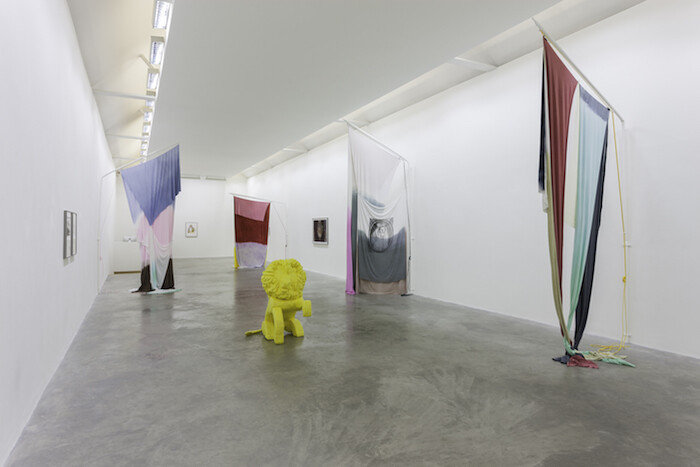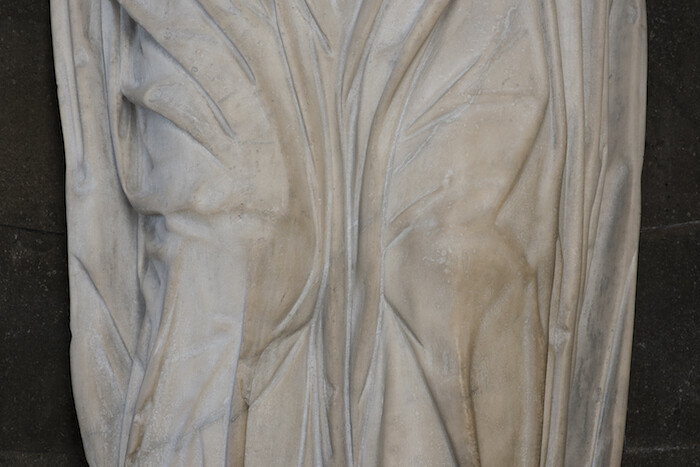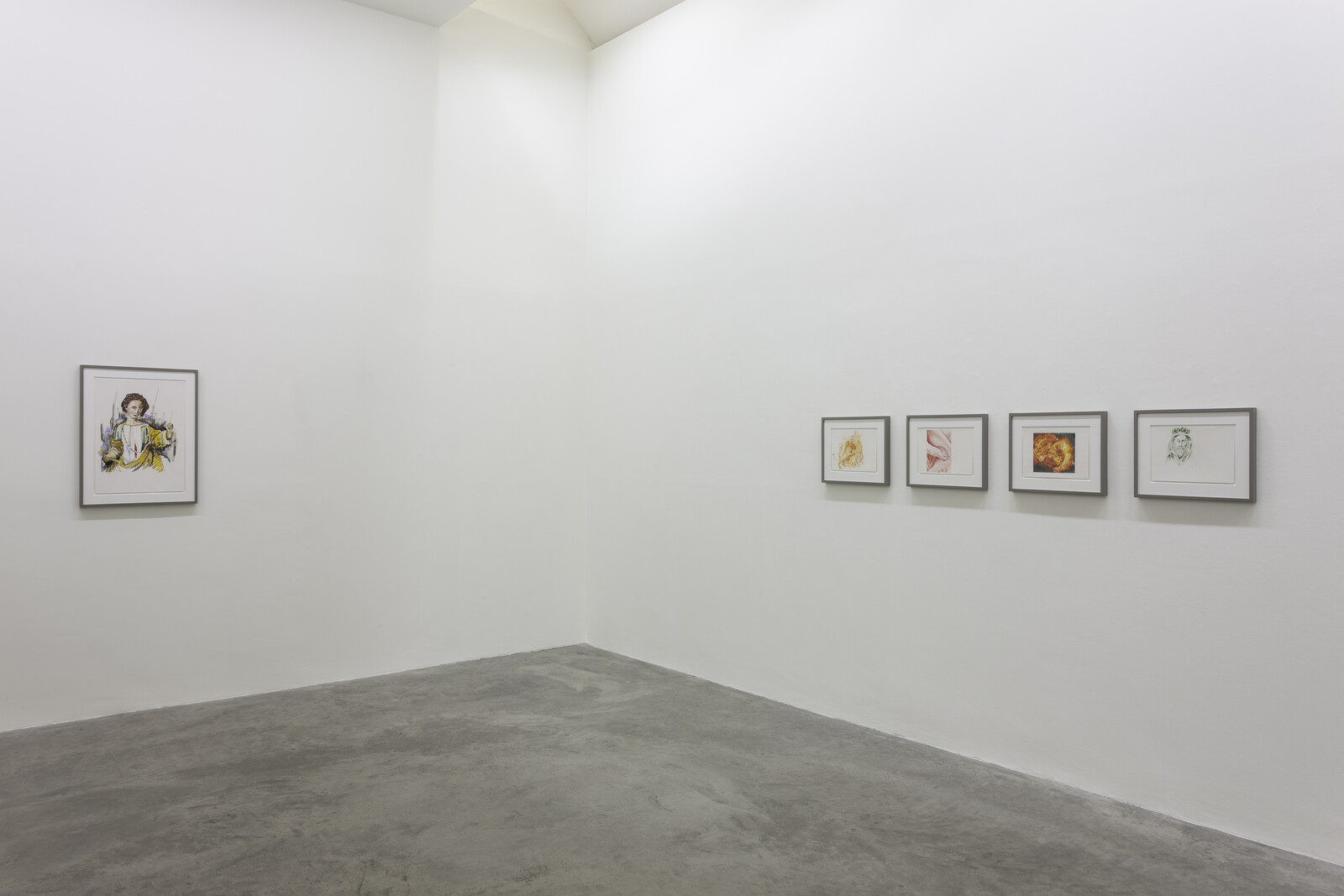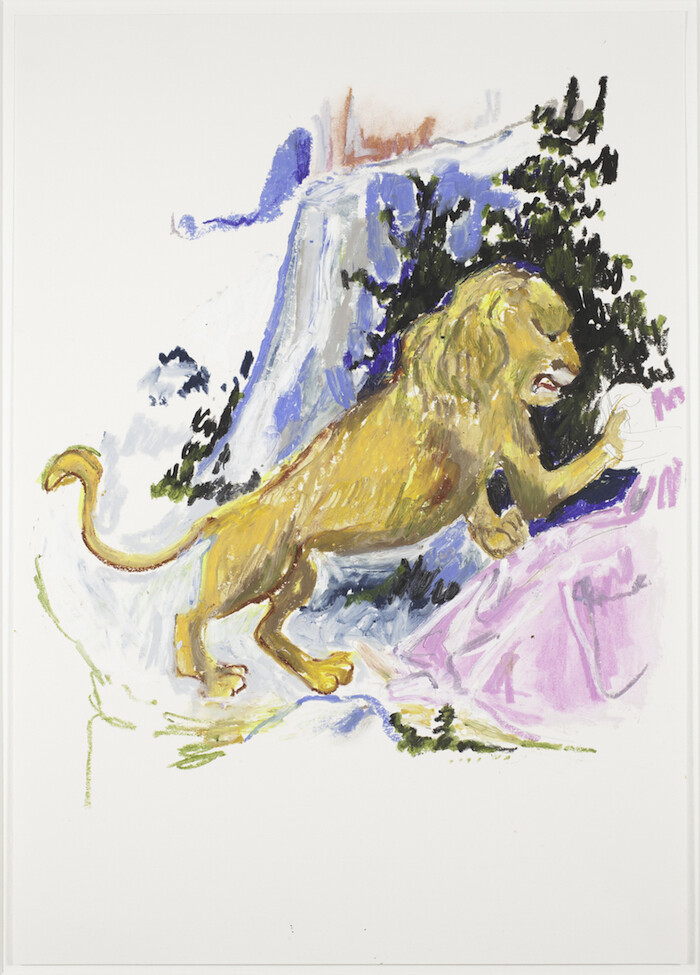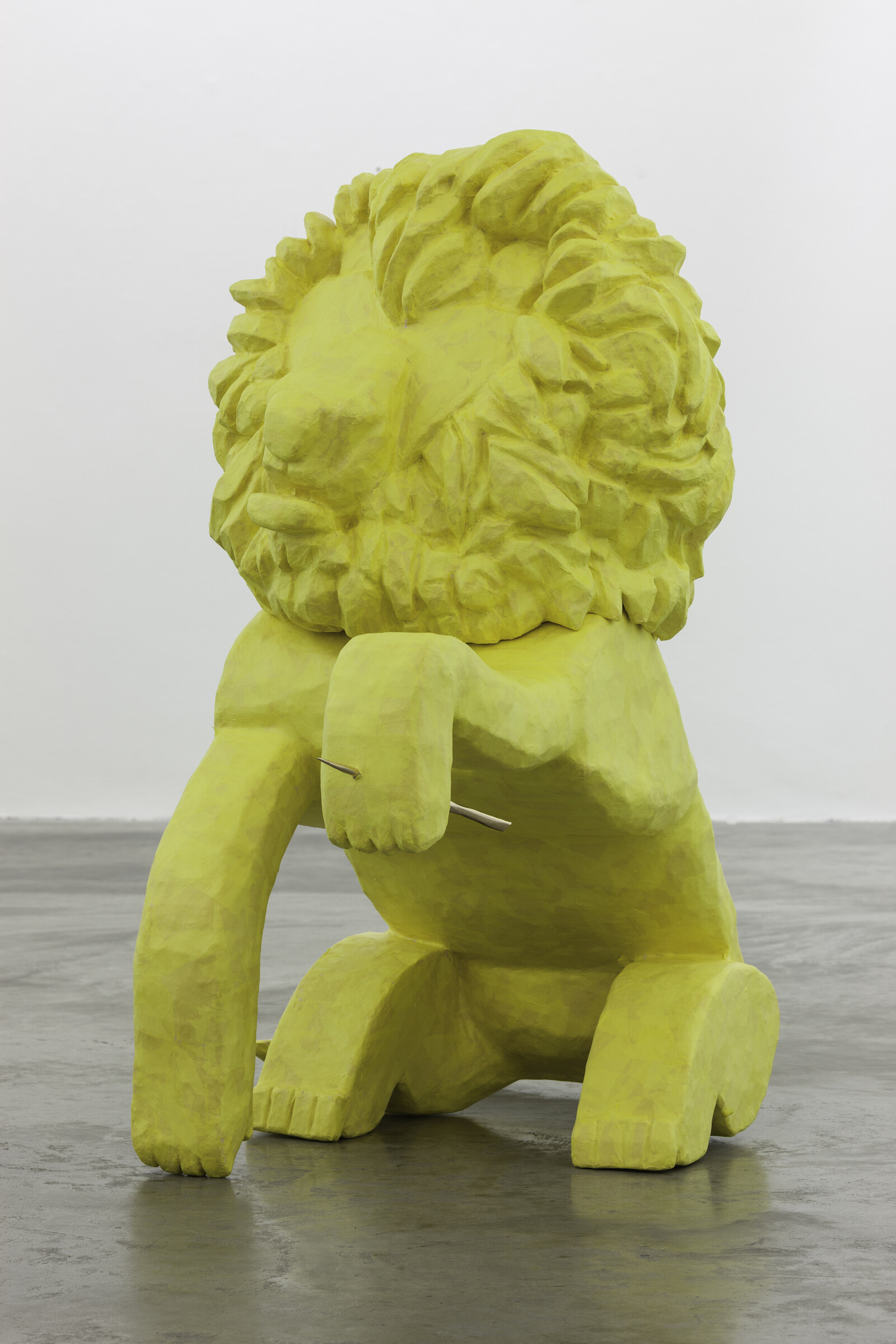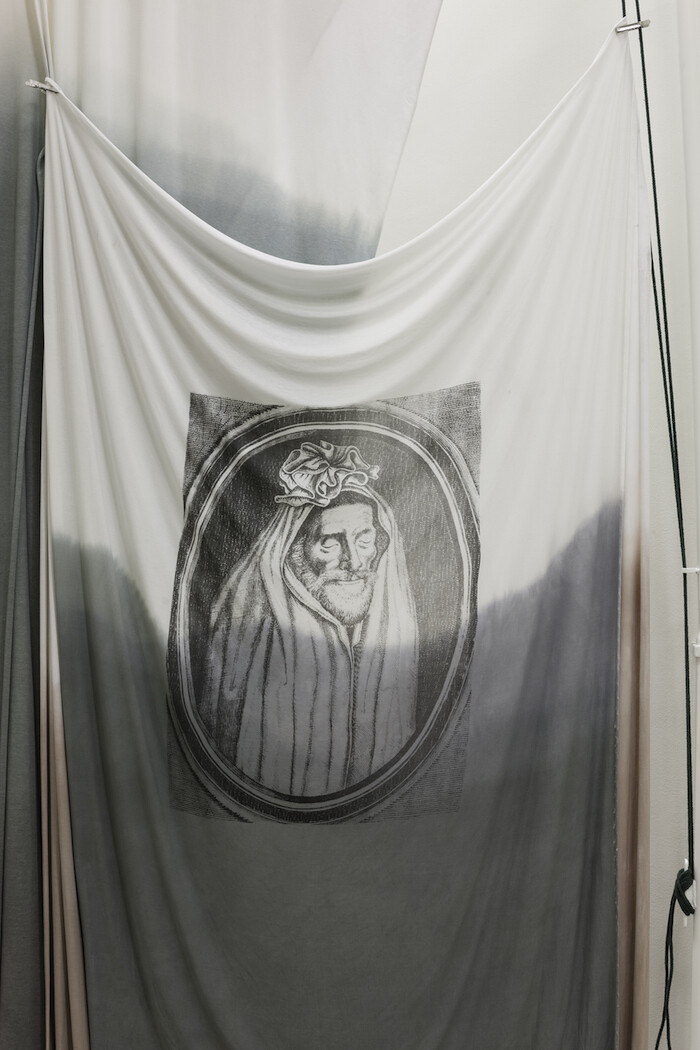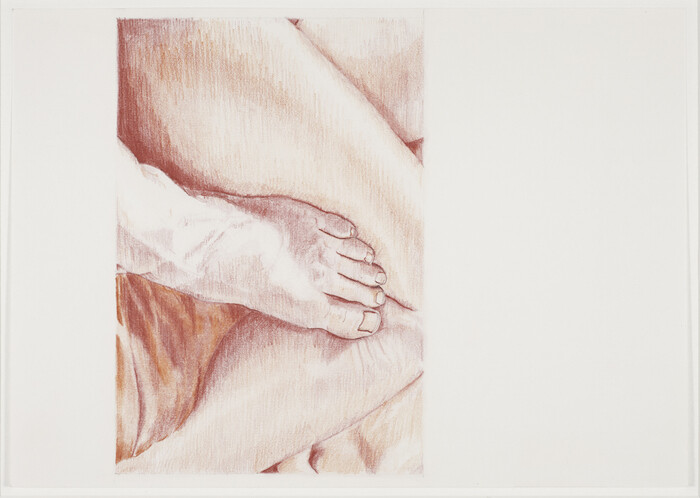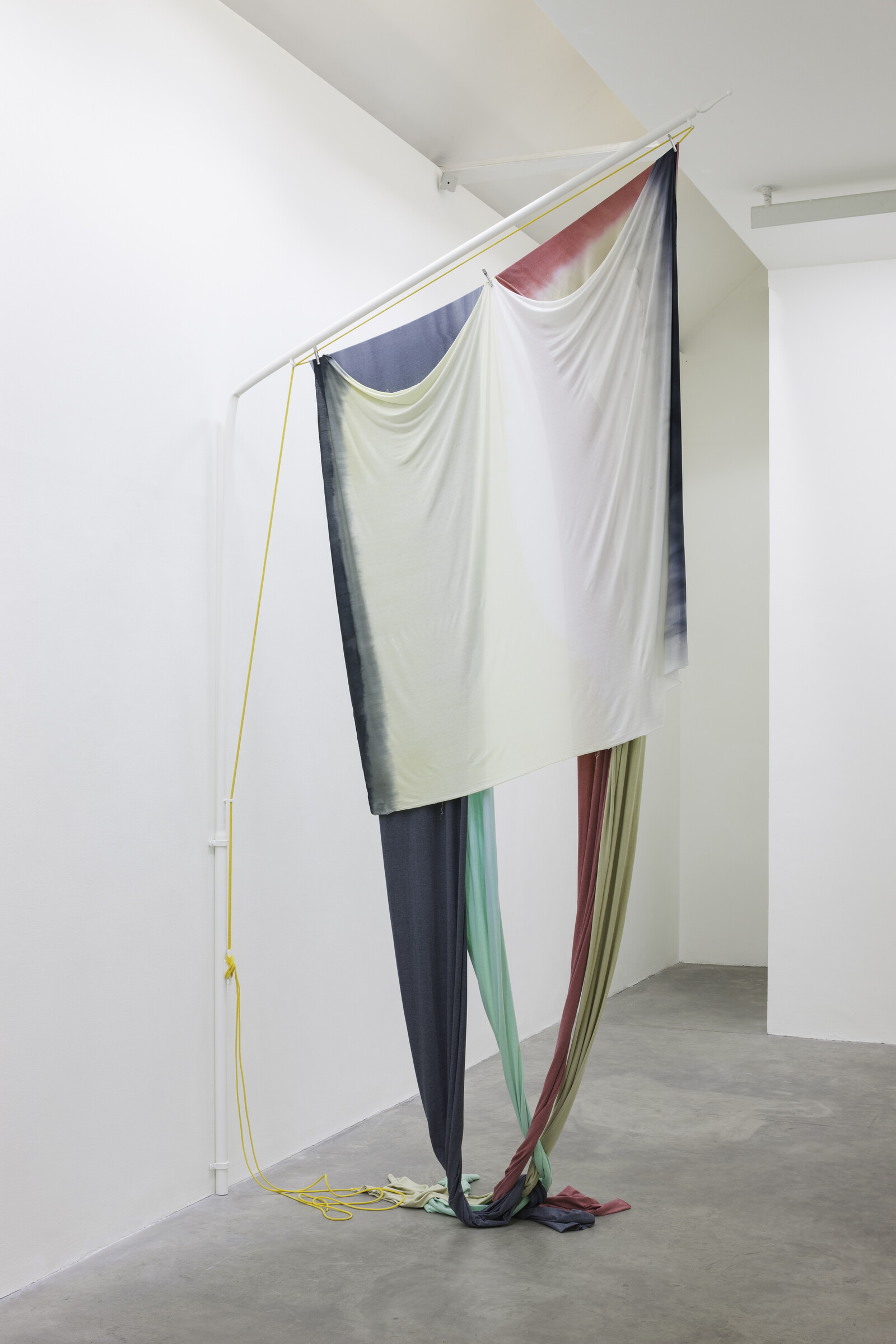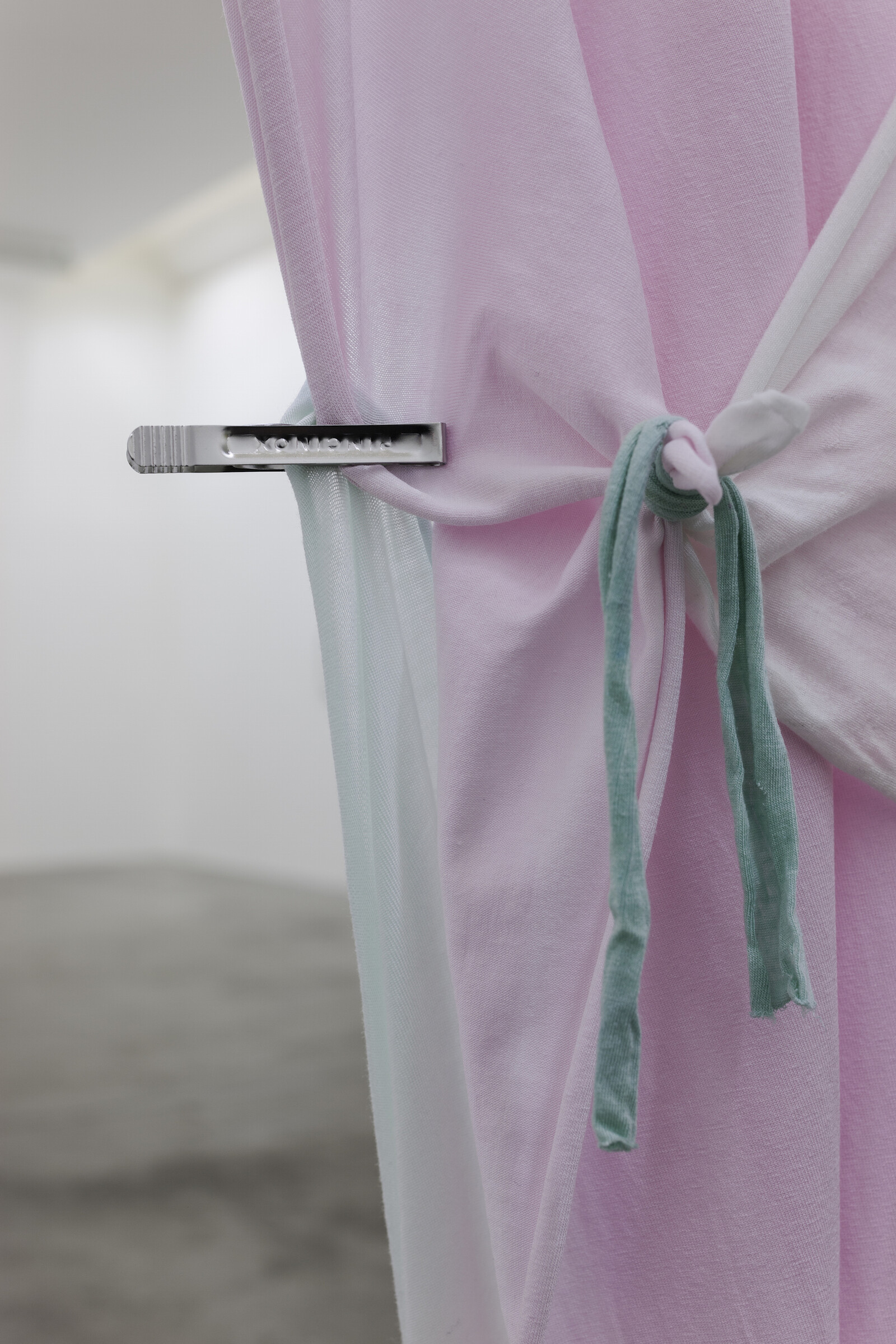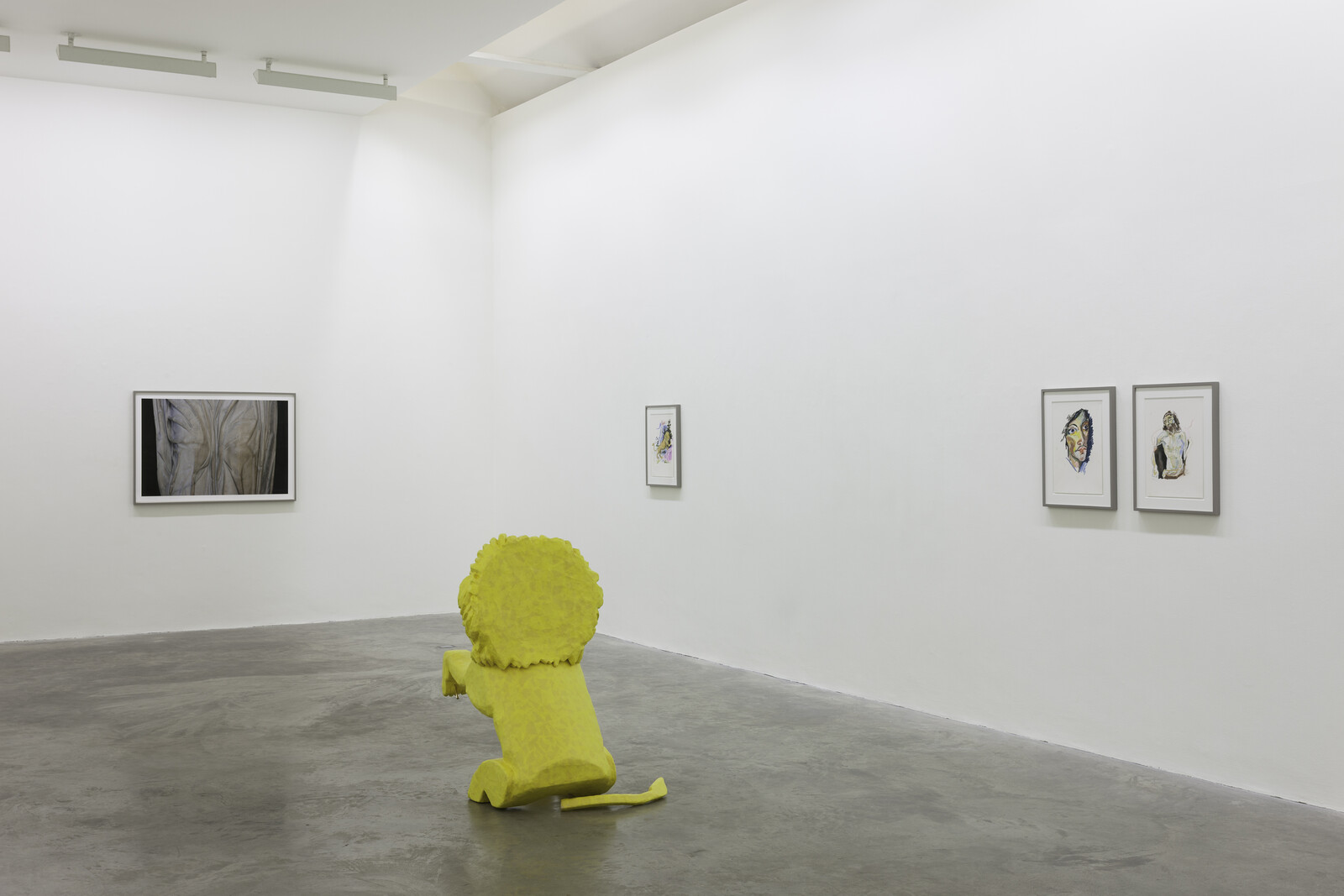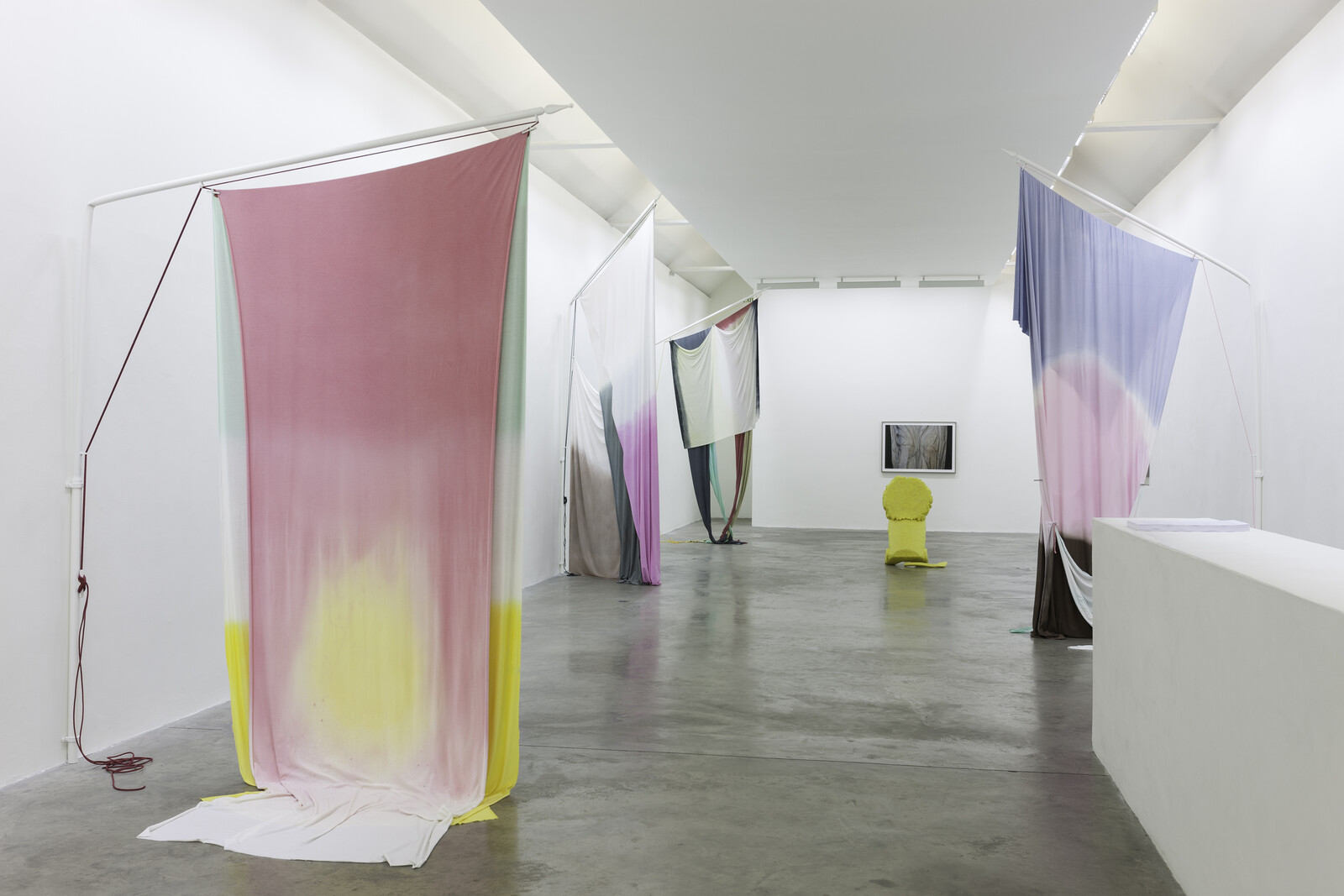From bended knee comes Isabel Nolan’s most recent body of work. At Dublin’s Kerlin Gallery, this position between seating and standing is suggested in various depictions of John Donne, Lucretia, and Saint Jerome, in a polystyrene sculpture of a seated lion, and in a series of flags hung from bent poles. The temporary bend in this flexible joint symbolizes a lapse in the exertion of power: how the firm posture of the powerful upright might be weakened, caught in a moment of distraction, or kicked forward surreptitiously from behind.
For ever and ever, and infinite and super infinite for evers (all works 2015), a large framed archival pigment print, depicts Donne’s knees in his marble funereal sculpture located in London’s St Paul’s Cathedral, where the poet acted as dean for the final ten years of his life. The fabric of his robe is draped in waves but runs smoothly over his knees, a slight chink in the otherwise robust stance of this reputable seventeenth-century scholar and cleric. Posing for this marble statue in the final stages of his stomach cancer, several months before his death in 1631, Donne’s bent knee evidences to Nolan an interesting moment of distraction—apprehension, perhaps—for the metaphysical poet. Nolan has penned an interesting short text, distributed at the exhibition, on the doubt made visible in Donne’s knees in relation to human vulnerability. She writes, “It is the statue’s earnestness and Donne’s careful staging, which tests me, that almost persuades me that humanity might be something real, that it might be a quality that genuinely sets us apart from other animals: not merely a preposterous and seductive fabrication.”
On the wall opposite For ever hangs a loose color-pastel-and-pencil portrait of Lucretia, a semi-legendary figure whose rape and subsequent suicide circa 510 BC allegedly provoked the revolution which replaced the Roman Kingdom with the Roman Republic. Nolan depicts Lucretia fully clothed in bloody garbs, dagger in hand, in the moment after she stabs herself, preferring to commit suicide rather than live in shame (as the legend goes). Near Lucretia hang a series of four small color drawings on paper collectively titled “Bent,” pencil studies of some of the exhibition’s subjects, one of which shows a close-up of a foot pressing into the back of the naked leg of someone lying on the floor. While the drawing does not disclose that person’s identity, its positioning implies the violence of Lucretia’s rape. Lucretia’s involuntary bent knee represents an altogether different experience of mortality and power compared to Donne, whose knee fell forward in a moment of profound contemplation.
To Nolan’s credit, “Bent Knees are a Give” doesn’t rest on the juxtaposition of these two figures’ fates. Several images of Saint Jerome appear in drawing—the saint who was reputed to have once tamed a lion by taking its paw to his knee and removing a thorn, a power over nature acquired through kindness and humanity. To complement these drawings of Saint Jerome is Nolan’s polystyrene, plaster, and papier-mâché sculpture, A lion with a thorn in his paw, sitting on the floor nearby. Its toxic yellowness and crude bulkiness lend an unexpected humor to the exhibition’s makeup. He extends his big, sore paw to us, and it’s our turn to get down on bended knee. It is a confident addition to the exhibition, a light note in surprising contrast to the more somber tones of the other works. The combination of figurative styles and material textures—a kitsch polystyrene lion sits before an elegant archival pigment print—is a medley enjoyable in its unpredictability.
But it is with her imposing fabric pieces that Nolan’s exhibition really takes flight, showing that, beyond these provocative and playful juxtapositions, hers is a practice that is emphatically speculative. Large white swatches of cotton have been dip-dyed, folded, and strung up with colored halyards, tethered to flagpoles that bend and angle outward over us from the wall, like a giant bended knee. The tallest, Hungry and Thirsty. Sorry and Angry. A flag for John Donne, is almost four meters high. They seem to allude to the shrouding in which Donne originally posed, but while that fabric encloses his knee—the sign of his fleeting doubt—Nolan’s dyed fabrics are hung out with purpose, and accentuate what’s expressed in her text, a clear and open admission of critical uncertainty. But neither is this an exercise of the faithless. Her time spent with these fabrics, that process of gradually dip-dying them in vivid hues, of folding them over for the colors to contrast and resound against one another, of hanging them up so that they rise and drape beneath us, evidences passages of the artist’s contemplation. The earnestness of their “careful staging” sets Nolan apart, no lesser testament to humanity than the soft bend in Donne’s knee.
